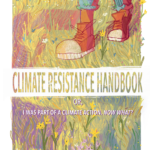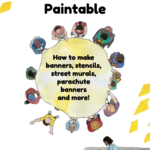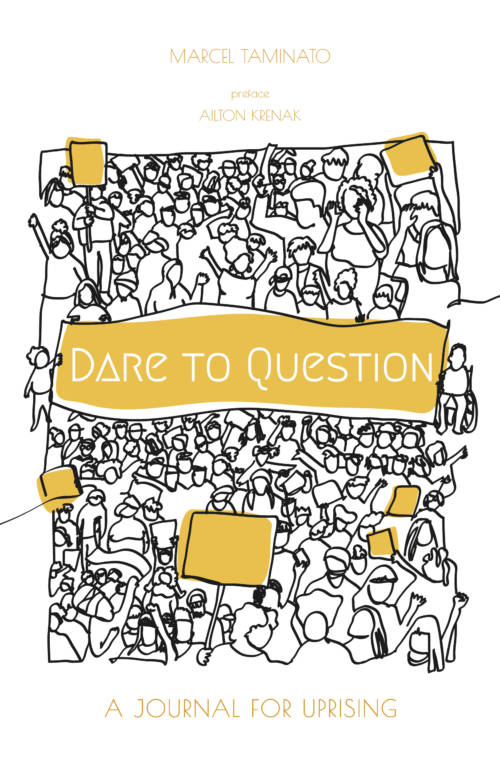There are many, many techniques for recruiting. This guide explores:
- Door knocking or tabling
- A flyering blitz
- A social media push
Doing any of these basic organizing tactics can achieve two critical functions — it builds support for your action, and will build your team’s list of contacts and active membership.
Public outreach can feel intimidating to do, but experience shows that with the right planning and practice, public outreach can be a highly empowering experience for volunteers.
We’ve outlined how to run a successful public outreach session in 9 steps:
Step #1: Choose your outreach method
Step #2: Set a target audience, your recruitment goals, set your asks, and a time and place
Step #3: Invite others to join you
Step #4: Gather your materials
Step #5: Confirm your attendees
Step #1: Choose your outreach method
The first step is to identify which of the outreach methods you will use:
-
Door knocking or public conversations: This is the a great tactic to use if you’ve got a fairly defined event plan, and a group of at least 5-10 volunteers ready to take action.
- Door knocking: This is where your team will knock on doors in a certain neighborhood or voting district. Door knocking gives you rich information about the neighborhood you are in, can be especially effective for long term organising and give you access to a wider range of people. People can be surprisingly receptive to having you visit them if you use the right methods to build rapport with them. That said, there are risks (like unpleasant people or dogs) to consider for door knocking, but in many contexts these can be prepared for and anticipated.
- Conversations in public places: This is where your team will set up a stall or gather in a place with a lot of foot traffic, like a market, community event, festival or community concert. You’ll want to think about how you can attract people to the stall, and ideally engage them in a participatory activity – whether it’s a game, an art display, bubble blowing or face painting for kids. But the most important thing is to gather their contact information so you can follow up before your event. The most suitable locations for public conversations are where people will have time to stop and talk to you. Avoid events or places where people are hurrying or focused on other things – it can be disheartening if everyone is ignoring you. Bear in mind that you might need a permit to hold a stall.
- Flyering Blitz: This is the right tactic for you if have at least a small number of volunteers with a good amount of time, or if you find flyers to be a very useful tool in your community. All you need to do is print out as many flyers as you could possibly put up — shoot high (think: hundreds)! Map out a few different neighborhoods or districts and split up into teams to plaster these areas with your flyers. Make sure to supply all the tools people will need: tape, staplers, etc. Also, you should check to make sure to look up the laws around flyering in your town – it can be surprisingly restrictive in some places, and liberal in others. Don’t forget to leave flyers in community spaces and businesses like gyms, coffee shops, grocery stores, local shops, etc. It’s a good idea to send people out in pairs for both safety, ease of putting up flyers, and accountability.
- Social Media Push: Consider this tactic if you are still at the beginning of your planning, don’t have a ton of volunteers, and are trying to build some buzz. Video is one of our best tools to build excitement, and it’s increasingly easy to produce with tools like a cell phone camera and Facebook Live.
- Something Else: Feel free to get creative here. The goal is for you to engage your team of volunteers, jump start recruitment, and get the word out about your event.
Step #2: Set a target audience, your recruitment goals, set your asks, and a time and place
Target Audience
Identify your target audience: which members of the community are most important to mobilise? Are you looking to talk with young people? People of faith? Business owners? Or is it a particular neighborhood? Reaching different members of the community will require your team to think intentionally about where and when you want to do your Recruitment day event.
Identify your Recruitment Day goals
Set two goals with your team:
- Set a goal for how many people you aim to engage on Recruitment Day (or how many flyers you want to put up), and the quality of that engagement.
- Set a goal that describes the experience you want your team/volunteers to have at the event.
If doing public outreach is new for your team, then set an easily achievable goal and focus on making sure all your team have a positive experience – because you want them to finish Recruitment Day feeling like they want to do it again.
Pick your time and place
If you are door knocking, starting at around 5:30pm allows time for people to get home from work on weekdays (although this timing is different the world over – you’ll know what time works!). Weekend afternoons can also be a great time. The time of your conversations in public places will likely be determined by the event or location you are meeting at.
Once you decide where to recruit, choose a nearby location for your team to meet up, prepare and hit the streets. You’ll need a location where you can spend time practicing as a team.
Lastly, pick a location for your follow-up event – the social event that you’ll invite people to in your first ask.
If you’re door knocking or tabling, identify your asks
When your volunteers are talking with people, if the member of the public shows interest, you will then pivot to making an ask of them. You should identify three asks. The first ask, is your high commitment ask (like will you join an event next weekend?). If the person says they can’t do that, you then ask them to do something that is a lower bar. If they say they can’t do that, then you follow through with your lowest bar ask (such as will you sign up for updates?).
- Your first ask should be to come to a social event where they can get to know others and learn about your campaign and upcoming action/events.
- Your second ask could be something like would you be happy to put up a poster in your workplace or distribute some flyers?
- Your third ask would be to stay informed about the campaign or to sign a petition.
Again, regardless, be sure to get their contact information with a petition or sign-up sheet!
Step #3: Invite others to join you
Once you have identified a time and location for your Recruitment Day activity, it’s time to let people know about it!
Decide how you want to publicize your recruitment day activity. Consider posting a facebook event to help your team coordinate, and send an email to your supporter base inviting them to join you. If you have phone numbers of local supporters, call through the list or text them – Recruitment Day is an ideal first activity for supporters to move from being passive to active supporters. The more personal your invitation the more likely your friends, family and fellow team members will be to join your activities.
Your online event should include what type of recruitment you’ll be doing, the time and location of your event, the nearby location where volunteers should meet, and the best way to get in touch with the coordinator (email and cell phone number). It can also include a friendly reminder that public outreach is fun, easy and critical to this fight.
Get past people’s fears – get them excited
When you invite people to join you, tell them about the support they’ll be provided with, including how less confident people will be paired with more experienced people (and that they’ll never be asked to go alone), that they don’t have to be an expert on climate change, they’ll get trained, and that experience shows that public outreach can seem scary but when done with others it is hugely rewarding. Taking the time to explain these will help people overcome the fears they may have. This is particularly relevant for more high-contact tactics like canvassing or tabling.
Organise a debrief
It is important to arrange ahead of time a debrief (it might be having a social drink together immediately after) for volunteers to share impressions of how and what type of people responded (what worked/didn’t, what to adjust), to get support if they had any challenges, and to celebrate the hard work of everyone.
Step #4: Gather your materials
Make sure you have everything you need.
For tabling and door-to-door canvassing:
- Clipboards
- You can also use alligator clips and cut-up cardboard as a cheaper alternative to clipboards
- Write up a script with your 3 asks, and print enough copies for everyone who will be canvassing. You may want to include a 1-2 sentence description of your group and event.
- Survey sheets (8 x per volunteer)
- Sign in form for volunteers – (1x per 10 volunteers)
- Pens!
- Name tags or badges, or a common identifying factor
- Bonus: quarter sheet flyers with your September 8th event details to hand out to people (both people you have a conversation with, and people who don’t want to stop, but will grab a flyer).
Each person should have their own clipboard with 4 petition sheets, 1 script, 1 info sheet and two pens!
For flyering blitz:
- Flyers – a lot of them!
- Packing tape
- A stapler or push-pins
- Bonus: quarter sheet flyers they can leave in shops, community centers, etc.
- A map or clear understanding of where they’re responsible for flyering
Each person should have tape, stapler or push-pins, a map, and 100+ flyers as they head out!
For social media push:
- A 1-page guide with sample tweets, facebook posts, and the event link and hashtags you’d like people to use in their posts. If you’re pushing videos, you may want to write a sample script or talking points you hope people will cover (for example, the goals of your event).
- A list of influencers you’d like to see re-post your content, and who will reach out to them (you can DM these folks and ask them to share on twitter and facebook).
- A short list of your own volunteers and allies with large social media reaches who are ready to make a video about why they’re rising for climate, jobs and justice.
Step #5: Confirm your attendees
Even after you’ve invited others to join you they often won’t remember unless you personally remind them and confirm their attendance one last time. A few days before Recruitment Day you should do this by:
- Giving anyone who said they were coming a call
- Send them a text if they don’t pick up
- Follow-up with an email or facebook/whatsapp message
All of this outreach in the lead up will help ensure your outreach activity is a success!
Step #6: Practice!
Practicing before your outreach activity is a great way to ensure your volunteers get more comfortable talking to people. Whether you’re a seasoned organiser or a first time volunteer, talking to strangers takes some practice. Once everyone has gathered in the predetermined location on the day, you should run a short training. (We recommend integrating these trainings to add interest to a regular membership meeting, too!)
The purpose of the training is to:
- Make sure volunteers know enough information about your campaign or event
- Have volunteers develop their personal narrative for why they are motivated to take action
- Practice the script
- Make a safety plan
Recruitment Day Training Schedule (allow 60min)
| Introduction: Welcome everyone, intro yourself and make sure everyone gets to share their names. | 5 mins |
| Discuss the outreach plans: talk about where you’ll be doing outreach and how volunteers will be distributed. Set a goal and a time that everyone will meet back and debrief. | 10 mins |
| Script preparation: Introduce the script sheets, run through it. Have different people in the group read the script out loud. Then give them 10 minutes to identify and write down their personal narrative. | 15 mins |
| Role Play: Model an interaction that someone might have with a community member. It’s helpful for volunteers to see someone do it before they jump into practice | 5 mins |
| Practice: Pair volunteers up and have them practice the script on each other. Each partner should have about 5 minutes. | 10 mins |
| Make a safety plan: Ask people to name potential risks, and identify how they will keep each other safe. | 10 mins |
| Final questions: Take any final questions! | 5 mins |
Step #7: Get out there!
It’s time to start talking to people, putting up flyers, or flooding social media with our content! At this point you or a designated contact point should remain at a central point so people can contact you if they need anything while they are out, or come back to base at any point if they need to.
After your the outreach session ends (either there is a set time, or you’ve hit all of your doors, or used up all your flyers), it’s time to debrief! For canvassers, make sure you collect their petition forms for data entry. At the debrief, make space for the following:
- Share impressions of how and what type of people responded (what worked/didn’t, what to adjust),
- Share the experience of doing it, and offer each other support if anyone had challenges,
- Celebrate the hard work of everyone, discuss what happens next.
Step #8: Enter the data
You’ll want to keep track of people’s contact information. You can do this with a sign-in sheet or maybe you use a fancier database to track people’s contact information.
It has become much more common to get sign-ups using your cell phone — to have people sign up directly. For example, if you use Action Network you can: use the Action Network “kiosk” mode on your phone to sign them up on the spot (this requires internet connectivity).
Many organisers prefer using paper and then entering the data later into their database. This takes time — so prepare for that. (If you use Action Network or another database, you may find these instructions helpful: upload a spreadsheet with all the data.)
Step #9: Follow up
The great thing about doing public conversations is that now you have the contact information of new people in your community who support your goals and who have agreed to one or more of your three asks. For social media, you may want to follow-up with key people and keep track of who tweeted — especially if they have a wider reach (e.g. influencers).
Follow-up is a critical step in making sure that everyone who agreed to one of your asks can take action and get involved.
Where someone has said that they want to do more than just get email updates, a follow up phone call will let the person know that you remember your interaction and want them to join you in taking climate action.


